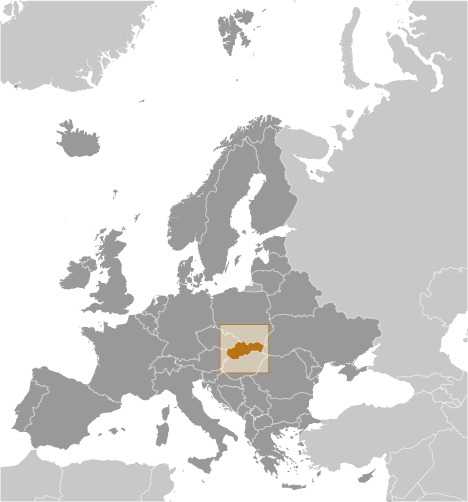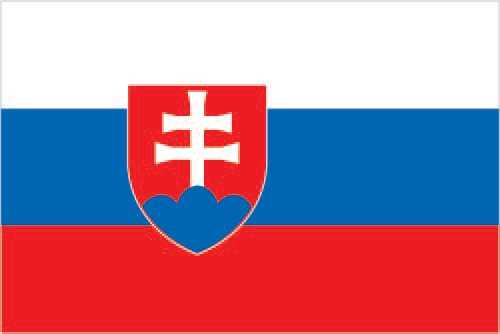Introduction
Background
Slovakia traces its roots to the 9th century state of Great Moravia. After the dissolution of the Austro-Hungarian Empire at the close of World War I, the Slovaks joined the Czechs to form Czechoslovakia. In 1993, Czechoslovakia underwent a nonviolent "velvet divorce" into its two national components, Slovakia and the Czech Republic.
Geography
Area
total: 49,035 sq km
land: 48,105 sq km
water: 930 sq km
Climate
temperate; cool summers; cold, cloudy, humid winters
Natural resources
lignite, small amounts of iron ore, copper and manganese ore; salt; arable land
People and Society
Population
total: 5,563,649
male: 2,684,747
female: 2,878,902 (2024 est.)
Ethnic groups
Slovak 83.8%, Hungarian 7.8%, Romani 1.2%, other 1.8% (includes Czech, Ruthenian, Ukrainian, Russian, German, Polish), unspecified 5.4% (2021 est.)
Languages
Slovak (official) 81.8%, Hungarian 8.5%, Roma 1.8%, other 2.2%, unspecified 5.7% (2021 est.)
Religions
Roman Catholic 55.8%, Evangelical Church of the Augsburg Confession 5.3%, Greek Catholic 4%, Reformed Christian 1.6%, other 3%, none 23.8%, unspecified 6.5% (2021 est.)
Population growth rate
-0.08% (2024 est.)
Government
Government type
parliamentary republic
Capital
name: Bratislava
Executive branch
chief of state: President Zuzana CAPUTOVA (since 15 June 2019)
head of government: Prime Minister Robert FICO (since 25 October 2023); Deputy Prime Ministers Robert KALINAK, Denisa SAKOVA, Tomas TARABA, and Peter KMEC (all since 25 October 2023)
Legislative branch
description: unicameral National Council or Narodna Rada (150 seats; members directly elected in a single- and multi-seat constituencies by closed, party-list proportional representation vote; members serve 4-year terms)
Economy
Economic overview
high-income, EU-member European economy; major electronics and automobile exporter; new anticorruption and judiciary reforms; low unemployment; low regional innovation; strong financial sector
Real GDP (purchasing power parity)
$180.205 billion (2022 est.)
$177.105 billion (2021 est.)
$169.011 billion (2020 est.)
Real GDP per capita
$33,200 (2022 est.)
$32,500 (2021 est.)
$31,000 (2020 est.)
Agricultural products
wheat, sugar beets, milk, maize, barley, rapeseed, sunflower seeds, potatoes, soybeans, pork (2022)
Industries
automobiles; metal and metal products; electricity, gas, coke, oil, nuclear fuel; chemicals, synthetic fibers, wood and paper products; machinery; earthenware and ceramics; textiles; electrical and optical apparatus; rubber products; food and beverages; pharmaceutical
Exports
$114.678 billion (2022 est.)
$109.565 billion (2021 est.)
$90.546 billion (2020 est.)
Exports - partners
Germany 20%, Czechia 11%, Hungary 9%, Poland 7%, France 6% (2022)
Exports - commodities
cars, vehicle parts/accessories, video displays, broadcasting equipment, electricity (2022)
Imports
$120.622 billion (2022 est.)
$109.265 billion (2021 est.)
$88.214 billion (2020 est.)
Imports - partners
Czechia 18%, Germany 15%, Poland 9%, Russia 7%, Austria 7% (2022)
Imports - commodities
vehicle parts/accessories, broadcasting equipment, natural gas, cars, electricity (2022)
Exchange rates
euros (EUR) per US dollar -
Exchange rates:
0.95 (2022 est.)
0.845 (2021 est.)
0.876 (2020 est.)
0.893 (2019 est.)
0.847 (2018 est.)
Page last updated: Tuesday, May 07, 2024




